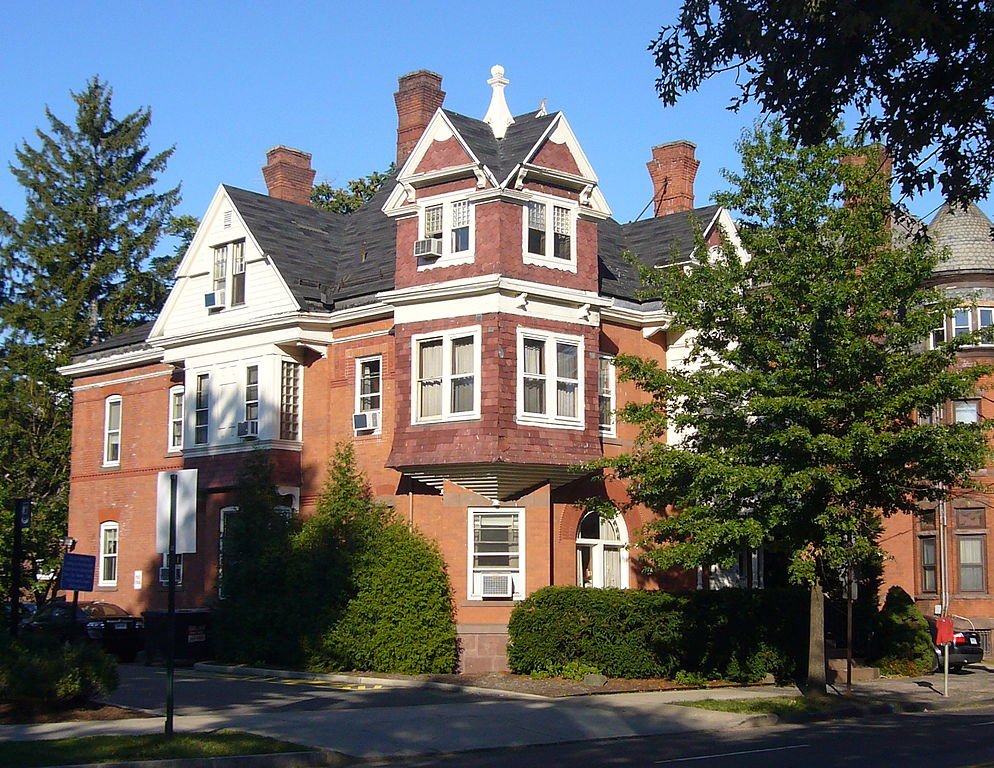#6636. Queen Anne Victorian Brick Mansion with Contrasting Facade Elements
The image showcases a magnificent example of late 19th century Victorian architecture – a brick mansion with an expressive facade. The building features an asymmetrical composition and a complex roofing system with multiple gables and tall brick chimneys, characteristic of the Queen Anne style.
The facade is predominantly constructed of red-orange brick with white decorative elements creating a striking contrast. Of particular note is the corner tower with an ornate crown and white finial, which provides the building with a vertical dominant. The window openings are framed with white casings, emphasizing the architectural rhythm of the facade.
Details typical of this period include decorative gables, numerous bay windows, and projecting elements that create an interesting play of light and shadow. The first and second floors are clearly divided by a cornice, while vertical articulations are emphasized by projecting bays. Modern comfort elements (air conditioners are visible) have been integrated into the building, indicating its adaptation to contemporary use while preserving its historical appearance.
The mansion is harmoniously integrated into the surrounding landscape, with well-maintained shrubs and trees framing the structure – characteristic of American historic districts. This is an excellent example of architectural heritage preservation in an urban environment.
